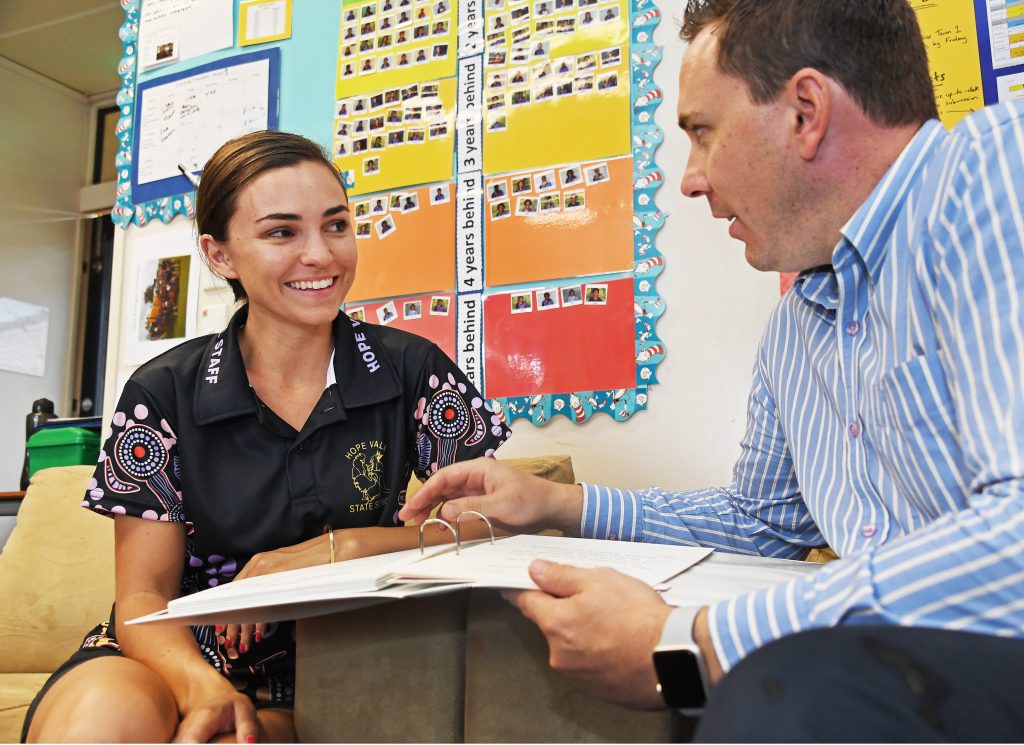Practice Apply Evidence-Based Learnings
-
Module Introduction2 Topics
-
Delivered With Fidelity14 Topics|2 Tests
-
Cover
-
Module Objective
-
What Happens When Apply Evidence-based Learnings is Delivered with Fidelity
-
The Process of How to Apply Evidence-Based Learnings
-
Applying Evidence-Based Learning: Scenario
-
A Teacher Receives Regular Expert Coaching
-
Video: Coaching Conversations
-
The School Team Builds a Positive High-Expectations School Culture
-
The School Team Shares Responsibility for Improvement
-
Video: Sharing Responsibility
-
Teachers Improve Their Practice and Teach to Mastery
-
Teachers Improve Practice and Teach to Mastery: Scenario
-
Check Your Understanding
-
Test Your Understanding
-
Cover
-
Not Delivered With Fidelity12 Topics|2 Tests
-
Cover
-
What Happens When Apply Evidence-based Learnings is Not Delivered with Fidelity
-
Expert Coaching is not Delivered
-
Expert Coaching is not Delivered Scenario
-
The School Team does not Contribute to a High-Expectations School Culture
-
The School Team does not Contribute to a High-Expectations School Culture: Scenario
-
The Teaching Team does not Share Responsibility for Improvement
-
The Teaching Team does not Share Responsibility for Improvement: Scenario
-
Teachers do not Improve Practice or Teach to Mastery
-
Teachers do Not Improve Practice or Teach to Mastery: Scenario
-
Check Your Understanding
-
Test Your Understanding
-
Cover
-
Barriers That Impede Fidelity9 Topics|2 Tests
-
Cover
-
Barriers That Impede Applying Evidence-Based Learnings with Fidelity
-
Using Deductive Logic to Identify the Cause of the Barrier
-
Not Knowing Why Applying Evidence-Based Learnings is Important
-
Not Knowing How to Apply Evidence-based Learnings
-
Time is Allocated to Unrelated Tasks
-
External Interruptions
-
Check Your Understanding
-
Test Your Understanding
-
Cover
-
Removing Barriers That Impede Fidelity11 Topics|2 Tests
-
Cover
-
Ways to Tackle Barriers so Apply Evidence-Based Learnings is Delivered with Fidelity
-
Not Knowing Why Applying Evidence-Based Learnings Is Important
-
Not Knowing Why Applying Evidence-Based Learnings Is Important
-
Video: Not Knowing How to Apply Evidence-Based Learnings
-
Not Knowing How to Apply Evidence-Based Learnings
-
Allocated to Unrelated Tasks
-
Process
-
Process
-
Check Your Understanding
-
Test Your Understanding
-
Cover
-
Module Completion Survey1 Topic
Participants 5

Applying Evidence-Based Learning: Scenario
Teacher Evie is concerned about her students’ participation. She has noticed that a few students seem to be participating all the time, while she never hears from other students. She asks coach Henry to observe a lesson and record which students participate.
Evie meets with Henry to review the data. Evie notices that, not only are five students participating more than the others, some students never participate. And, the students who have higher participation rates have higher scores on the previous two mastery tests. Henry reviews the Use Individual Turns practice with Evie who implements the practice as her improvement action.

The following week, Evie and Henry discuss how Evie has implemented Use Individual Turns. She shares that she has used sticks with student names on them to increase student participation, and that she put sticks with the students who never participate in twice so they will have a higher rate of participation. She has noticed a shift in the classroom in terms of who is participating. When they review the week’s mastery test data, the students who were participating least before all demonstrated increased scores.

Principal Charlotte highlights Evie’s progress in her school professional conversation. She asks Evie to share what she noticed, how she addressed it, and the impact on her classroom. Charlotte praises Evie for her learning, and the connection to student mastery. She encourages other teachers to take Evie’s idea to increase participation and apply it to their own classrooms.

